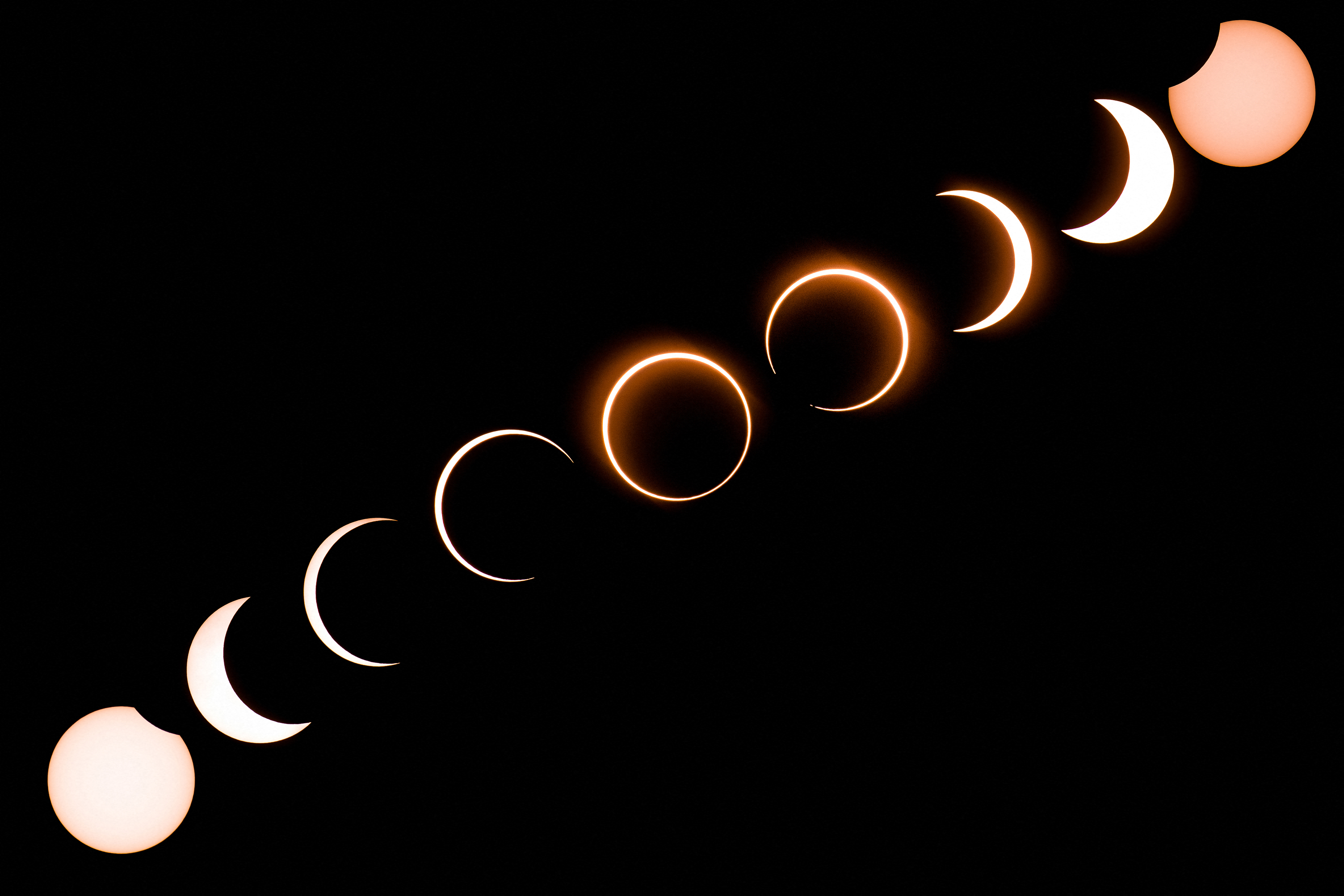Americans living in a narrow swath of the country will have an opportunity to view a rare astronomical event today.
The sun, moon and Earth will align perfectly in an annular solar eclipse on October 14, in which the moon is not large enough to completely block the sun’s light. The eclipse creates a halo around the moon as it passes in front of the sun, known as the Ring of Fire. It is the last annular eclipse until 2039 when one will be visible in Alaska.
The eclipse will be seen in eight states across the southwest United States. The Ring of Fire’s direct path will be visible in parts of Oregon, California, Nevada, Utah, Arizona, New Mexico, Colorado and Texas. Other parts of the U.S. will be able to view a partial eclipse but won’t have the ability to see the Ring of Fire in person.
The Ring of Fire will be visible at slightly different starting times between the period of 9:19 a.m. and 9:25 a.m. PDT in Oregon, California and Nevada, depending on the viewer’s location. It will be visible between 10:27 a.m. and 10:34 a.m. MDT in Utah, Colorado, Arizona and New Mexico. For viewers in Texas, the show begins at around 11:52 a.m. CDT.
The Ring of Fire is visible for only a few minutes depending on the location of the viewer, and the view is dependent on the weather.
AccuWeather meteorologist Brandon Buckingham told Newsweek that clear blue skies are paramount for a good view of the eclipse.
“The main thing to look for here is blue skies for perfect viewing conditions,” Buckingham said. “Generally for these eclipses during the daytime hours we like to see clear skies so you can have an uninterrupted view as the moon passes in front of the sun’s light.”
The Ring of Fire eclipse is only one of several astronomical events happening this month. A week afterward, an Orionid Meteor Shower will produce about 20 shooting stars per hour overnight October 20 into the early morning hours of October 21. The Orionids is the most prolific meteor shower in Halley’s Comet. People in both the northern and southern hemispheres will have the chance to view the showers, weather permitting.
Another eclipse is expected to take place later this month, which has also elicited interest from skywatchers.
The Hunter’s Moon—a popular name for the October full moon—will fill the sky on October 28 and will also produce a partial lunar eclipse. The eclipse is produced when the moon passes through Earth’s shadow. Viewers in Europe, Africa and Asia will have the best view of the eclipse, which will likely not produce much of a show in the United States, according to AccuWeather.
The next time Americans will be able to experience a partial lunar eclipse on U.S. soil will be September 18, 2024.

